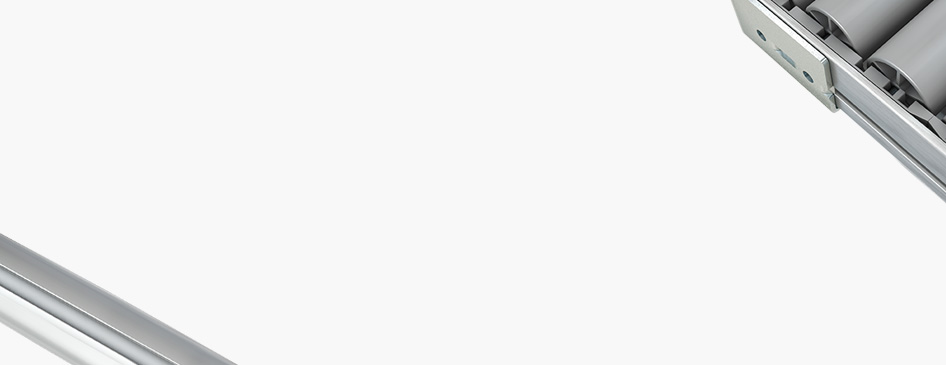
Seleccione uno
o más idiomas
0,1,3
- Alemán
- Inglés
- Chino
- Español
Ley de engranajes
La ley general de engranajes describe cuál debe ser la forma de los dientes de engranes entrelazados (acoplados) para asegurar la mejor transmisión posible de movimiento rotativo uniforme. Para prevenir la abrasión, los dientes deben mostrarse idealmente un movimiento de rodado puro sin deslizamiento en los puntos de contacto de los flancos de los dientes. Para lograr esto, la línea normal en cualquier punto de contacto entre dos flancos de dientes siempre debe pasar por el punto primitivo C.
Cuando se tiene un engrane existente con cualquier forma de flanco de diente, se puede usar la ley de engranaje para diseñar el contraflanco adecuado para engrane de acoplamiento. Esto es posible debido a que, para los círculos primitivos dados, cada perfil de flanco corresponde a una ruta de acción específica y a un perfil de contraflanco específico y viceversa.
Fundamentalmente, los puntos P y P' del flanco deben tocarse cuando el engranaje es correcto y los vectores de velocidad son perpendiculares a los radios. Si la velocidad en la superficie se divide en componentes tangencial y normal, es posible evitar que los dientes se levanten si el componente normal es del mismo tamaño en ambos engranes. La relación entre la velocidad de entrada y de salida, y la relación de transmisión deben permanecer constantes.
Verzahnungsgesetz
Das allgemeine Verzahnungsgesetz beschreibt, wie die Zähne von ineinander greifenden (kämmenden) Zahnrädern zu formen sind, damit sie eine gleichförmige Drehbewegung möglichst optimal übertragen. Dabei sollen die Zähne an ihrem Berührungspunkt an den Zahnflanken eine idealerweise reine Abrollbewegung ohne Schlupf aufweisen, um die Entstehung von Abrieb zu vermeiden. Hierzu muss die Normale im jeweiligen Berührungspunkt zweier Zahnflanken stets durch den Wälzpunkt C gehen.
Unter Anwendung des Verzahnungsgesetzes kann für eine beliebig gestaltete Flanke eines Zahnrades die Gegenflanke am zweiten Zahnrad konstruiert werden. Dies beruht auf der Tatsache, dass jedem Flankenprofil bei gegebenen Wälzkreisen eine bestimmte Eingriffslinie und ein bestimmtes Gegenflankenprofil entspricht und umgekehrt.
Grundsätzlich müssen sich die Flankenpunkte P und P? bei einer korrekten Verzahnung berühren und die Geschwindigkeitsvektoren senkrecht auf den Radien stehen. Wird die Geschwindigkeit auf der Oberfläche in eine Normal- und eine Tangentialkomponente zerlegt, wird ein Abheben der Zähne dann vermieden, wenn der Normalanteil bei beiden Rädern gleich groß ist. Das Verhältnis von Antriebs- und Abtriebsdrehzahl sowie das Übersetzungsverhältnis müssen konstant bleiben.
Law of gearing
The general law of gearing describes how the teeth of interlocking (mating) gears should be shaped to ensure the best possible transmission of a uniform rotary motion. To prevent abrasion, the teeth should ideally exhibit a pure, slip-free rolling movement at their contact points on the tooth flanks. To achieve this, the normal line in any point of contact between two tooth flanks must always pass through pitch point C.
When you have an existing gear with any shape of tooth flank, you can use the law of gearing to design the appropriate counter flank for the mating gear. This is possible because, for given pitch circles, every flank profile corresponds to a specific path of action and a specific counter-flank profile, and vice-versa.
Fundamentally, flank points P and P? must touch when the gearing is correct and the velocity vectors are perpendicular to the radii. If the velocity on the surface is broken down into normal and tangential components, it is possible to avoid the teeth lifting off if the normal component is the same size on both gears. The ratio of input to output speed and the transmission ratio must stay constant.
齿轮传动法
一般齿轮传动法描述了互锁的齿轮(配对的)的成型方法,以确保最佳的均匀的旋转运动传动。为了防止磨损,齿在齿面的接触点理想情况为纯粹、无滑动的滚动运动。为了实现这一目标,在任一点的两个齿面之间接触的法线必须总是通过齿节点C。
当你有任何齿面形状的齿轮,你可以使用齿轮传动法来设计相应的配对齿轮的反齿面。这是有可能的,因为对于每个给定的齿节,每个齿廓都对应着一个特定的运动路径和一个特定的反齿廓,反之亦然。
从根本上讲,当啮合正确,并且速度矢量垂直于半径时,齿面点P和P'必然会接触。如果在表面上的速度被分解为垂直和切向分量,当两个齿轮上的切分量大小相同时,那么有可能完全避免齿的上升。输入与输出速度的比以及传动比必须保持恒定。
